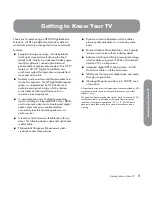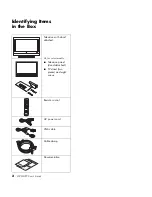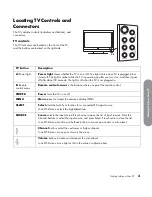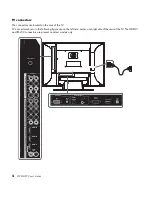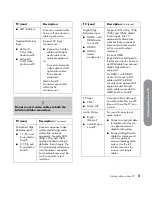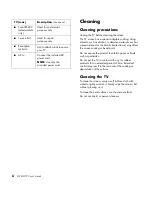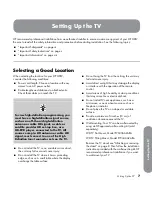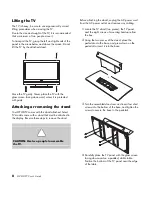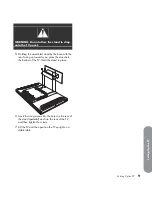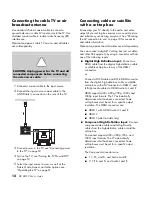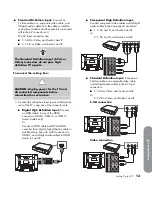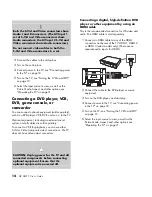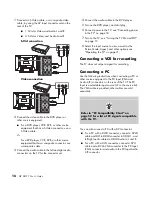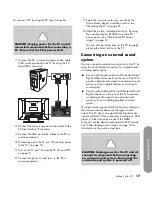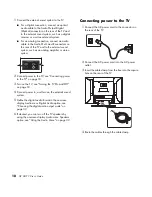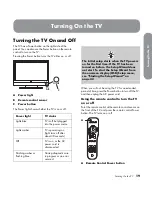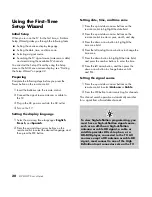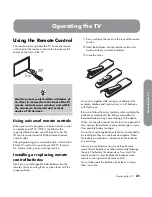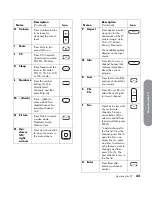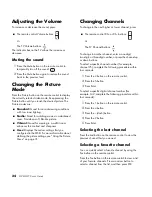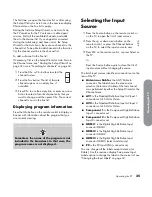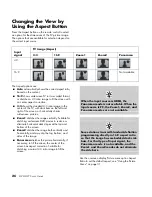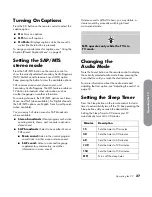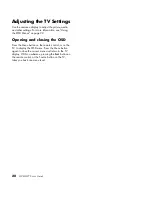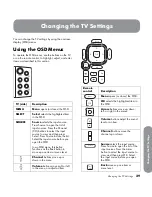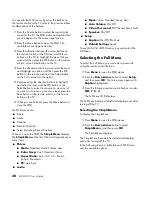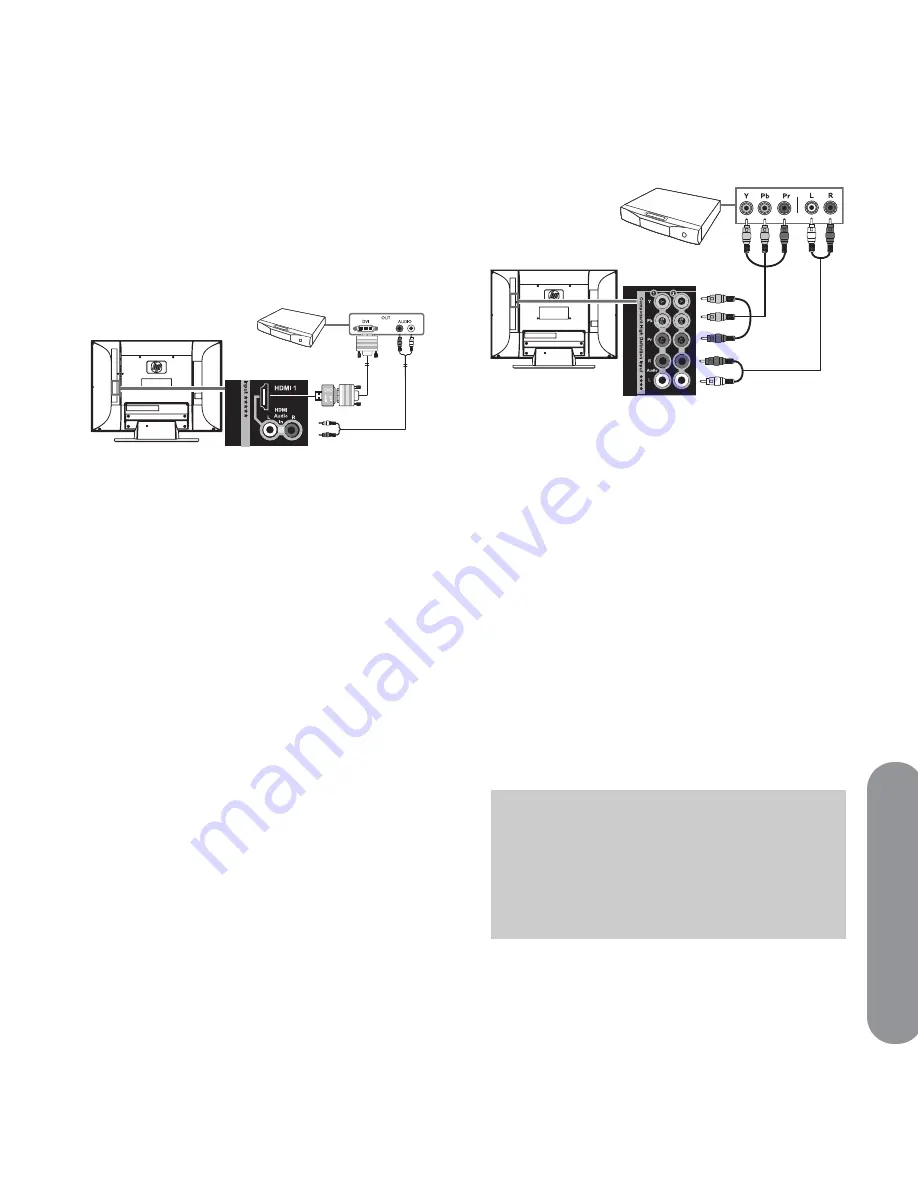
Se
tt
in
g
U
p
t
h
e TV
Setting Up the TV
15
Connecting a digital, high-definition DVD
player or other equipment by using a
DVI cable
The DVI-D cable, DVI-to-HDMI converter, and the audio
cable are sold separately.
1
Connect a DVI-D cable and DVI-to-HDMI converter
to HDMI 1 on the rear of the TV, and left-right
audio cables to HDMI Audio In L and R.
2
Connect the DVI cable to the DVI-D connector on
the DVD player.
3
Connect the audio cable to the audio out
connectors on the DVD player.
4
Turn on the DVD player, and start play.
5
Connect power to the TV; see “Connecting power
to the TV” on page 18.
6
Turn on the TV; see “Turning the TV On and Off”
on page 19.
7
Select the input source to view, as well as the
Picture Mode, Aspect, and other options; see
“Operating the TV” on page 21.
Connecting a high-definition DVD player
or other equipment using component
cables
There are two sets of high-definition Component
connectors you can use:
■
1: Y, Pb, and Pr, and Audio L and R
■
2: Y, Pb, and Pr, and Audio L and R
1
Connect component video cables and left-right
audio cables to the Component connectors on the
rear of the TV.
2
Connect the cables to the DVD player.
3
Turn on the DVD player, and start play.
4
Connect power to the TV; see “Connecting power
to the TV” on page 18.
5
Turn on the TV; see “Turning the TV On and Off”
on page 19.
6
Select the input source to view, as well as the
Picture Mode, Aspect, and other options; see
“Operating the TV” on page 21.
Connecting a standard-definition DVD
player or other equipment by using
S-Video or Video cables
Connect a standard-definition DVD player, VCR, game
console, camcorder, or other AV equipment by using
S-Vid or Video (composite video) connectors. These
connectors do not pass high-definition signals.
!
The S-Vid and Video connectors share the
audio connectors in the set. Do not connect
video cables to both the S-Vid and Video
connectors in a set.

